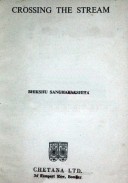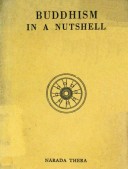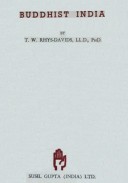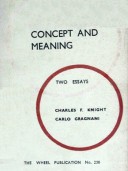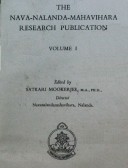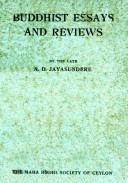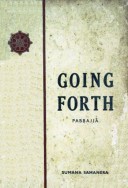Tìm Sách
Sách tiếng Anh-English >> A Brief History of the Western World
Thông tin tra cứu
- Tên sách : A Brief History of the Western World
- Tác giả : Stewart C. Easton
- Dịch giả :
- Ngôn ngữ : Anh
- Số trang : 428
- Nhà xuất bản : Barnes & Noble
- Năm xuất bản : 1965
- Phân loại : Sách tiếng Anh-English
- MCB : 12010000004727
- OPAC :
- Tóm tắt :
A BRIEF HISTORY OF THE WESTERN WORLD
EVERYDAY HANDBOOK
From Prehistoric Times to the Present including Maps
And a Chronological chart
By STEWART C. EASTON
BARNES & NOBLE , INC
Fourth Printing1965
TABLE OF CONTENTS
Chapter Introduction – what is the Western world
I Prehistory
The earliest men
The Neolithic revolution
II the earliest civilizations
Egypt
Mesopotamia
The Persian empire
The Hittites
Commercial peoples of Western Asia
III The Hebrew civilization and religion
The Patriarchs
The conquest and settlement of Canaan
Division of the Kingdom of Israel – the exile and return
The contribution of Hebrew religion to western civilization
IV The civilization of the ancient Greeks
Cretan civilization, precursor of Greeks
The settlement of the Greek mainland
The Spartan State
The Athenian State
The Persian wars
The Peloponnesian war
The fourth century – rise of Philip of Macedon
Alexander the Great
Cultural achievement of the Greeks
V Roman civilization
Political institutions of early Rome
The ezpansion of Rome to 133 b.c
From the Gracchan revolution to the fall of Republic
The principate
Chapter
From pricipate to empire
Cultural and political achievement of the Romans
VI Christianity and the End of the Western empire
The rise of Christianity
The beginning of the Totalitarian empire – Dioletan and Constantine
The barbarian invasions and the new Kingdom of the west
VII The successor States of the Roman empire
The Byzantine empire
The Barbarian kingdoms of the west
The civilization of Islam
VIII early Medieval Europe to the end of the tenth
The Carolingian empire
The beginning of National States in Europe
Invasions of Northmen and Magyars
Eastern Europe – the Byzantine empire
Summary – the dark ages
IX The middle ages to the close of the twelfth century
The feudal and Manorial systems
The Empire and the Papacy
The empire under the Hohenstaufens
The Norman monarchy in England
The early Capetian monarchy in France
The Iberian Peninsula – the reconquista
The crusades – the first major ezpansion of Europe
The development of towns and urban life
X the last medieval centuries
The church at the height of its power
The final struggle between empire and papacy
England – the beginning of constitutional monarchy
The consolidation of the French Kingdom
The Iberian peninsula
Eastern Europe
Progress of the towns in the later middle ages
Chapter
Decline of medieval civilization in the fourteenth and fifteenth centuries
Cultural accomplishments of the middle ages
XI The age of the Renaissance and the discoveries
Decline of the medieval church
The Renaissance in Italy
The Renaissance beyond the Alps
The age of discovery and the “Commercial revolution”
XII The Protestant reformation and its consequences
Background of the reformation
Martin Luther and the beginnings of the reformation
The religious peace of Augsburg
The growth of calvinism
Anglicanism
The Catholic or counter reformation
XIII The European state system
The Holy Roman empire of the Hapsburge
The Spanish Hapsburg monarchy
The Ottoman empire
The ascendancy of France
England – the Tudor monarchy and the Puritan revolution
Brandenburg – Prussia
Eastern Europe
The smaller countries of Europe
Expansion beyond the European continent
XIV The eighteenth century – the age of enlightenment
Impact of the scientific revolution
The enlightenment despots
Eighteenth century France
The advance of constitutional government in England
International relations
The expansion of Europe in the eighteenth century
XV The French revolution and the era of Napoleon
The French revolution
The era of Napoleon
Chapter
XVI The agricultural and industrial revolutions
The agricultural revolution
The industrial revolution
XVII nineteenth-century Europe to 1871 _the growth of Nationalism and liberalism
The Metternich system and its failure
Great Britain in the Nineteeth century
Russia , Bulwark of autoracy
The foundation of the Germain empire
The unification of Italy
XVIII The Americas in the Nineteenth century
The United States
Canada
Latin America
XIX The expansion of Europe
Motives for expansion
The far East
Africa
XX The breakdown of International concord
(1871 – 1914)
The European Alliance system
The Balkan powder Keg
The murder at Sarajevo and its consequences
XXI The war and the peace
The progress of the war
The peace settlement
XXII Thelong armistice
The Russian Communist State
Italian fascism
Totalitarian Germany
The major democracies during the long armistice
The league of nations
The Spanish civil war
The world on the Eve of the war
Chapter
XXIII The second global war and its consequences
The cold war
The devolution of the Western empires
The United Nations
XXIV Conclusion – the world in the 1960’s
The promise of science
The Haves and the have nots
Western civilization – a balance sheet
Chronological chart: key dates in Western history
Index
MAPS
Ancient near East
Alexander’s empire
Roman empireunder Trajan
Europein the time of the crusades
Europein the time of Charles V (ca, 1519)
Europeafter the thirty years’war (1648)
European treaty adjusment 1713-1720
Europeafter 1815
The partition of Africa in 1914
Europebefore world war I (1914)
Europeafter world war (1919)
Europein 1960
The world (1961)
PUBLISHER’S NOTE
STEWART C. EASTON, a native of England, spent two years at Oxford University, followed by a number of years devoted to business and to service in the Canadian army. He then received his B.A, from Ottawa univesity and his A. M, and Ph. D. from Columbia University. He taught history at City College, new York, from 1947 to 1960, retiring with the rank of Associate Professor. He is author of Roger Bacon and his search for a Universal science,
 Facebook
Facebook
 Google
Google
 Google+
Google+


